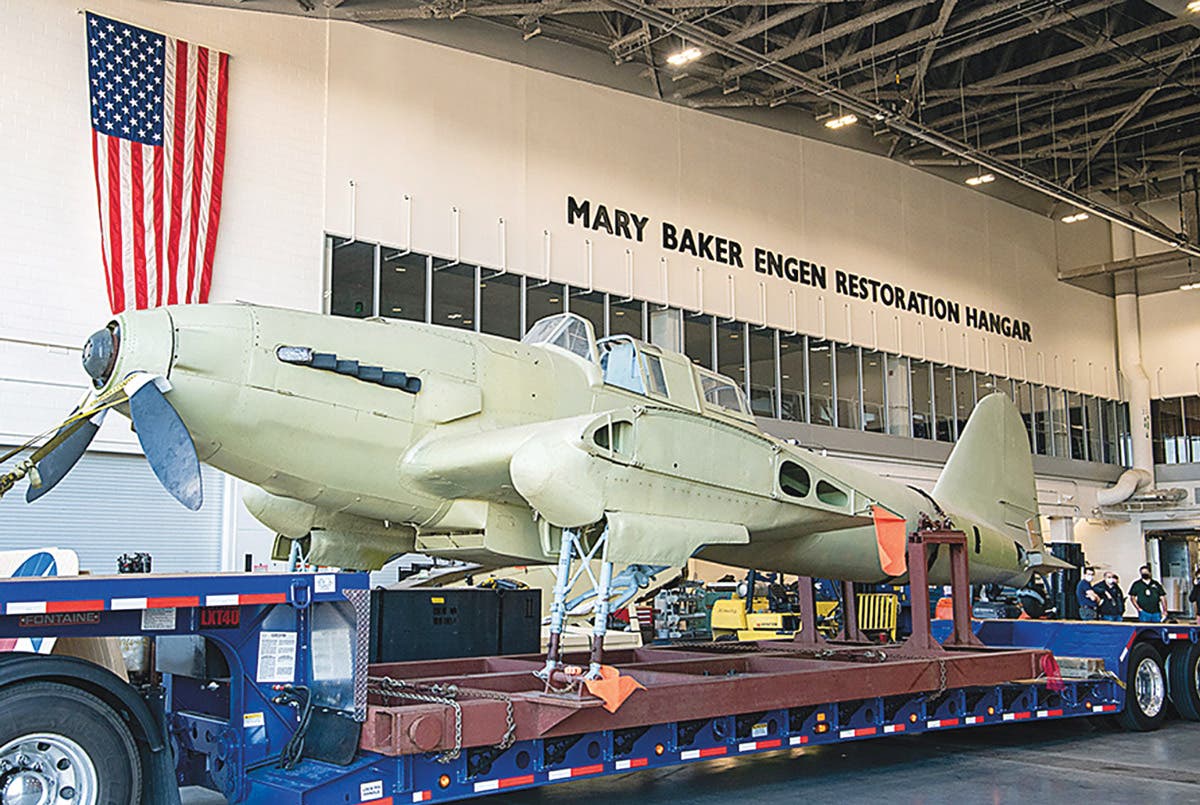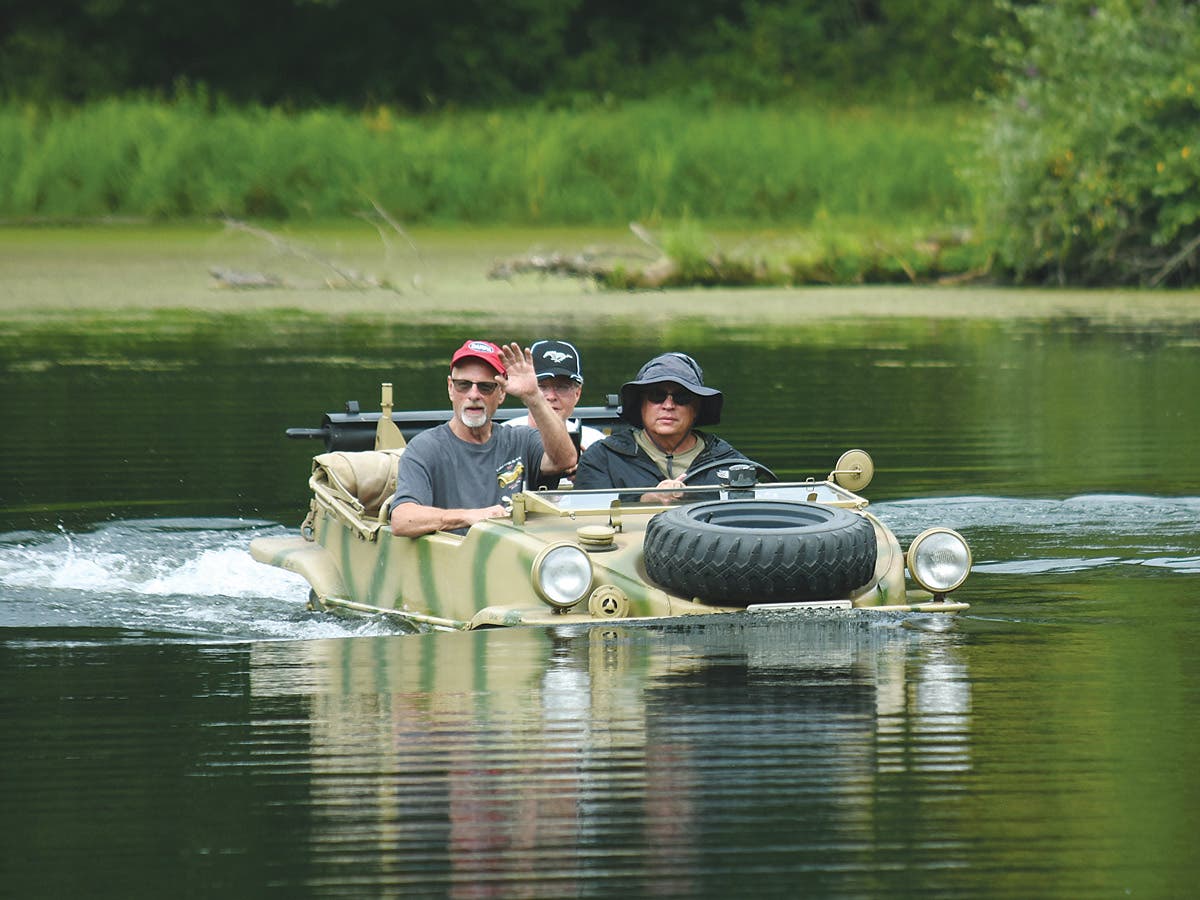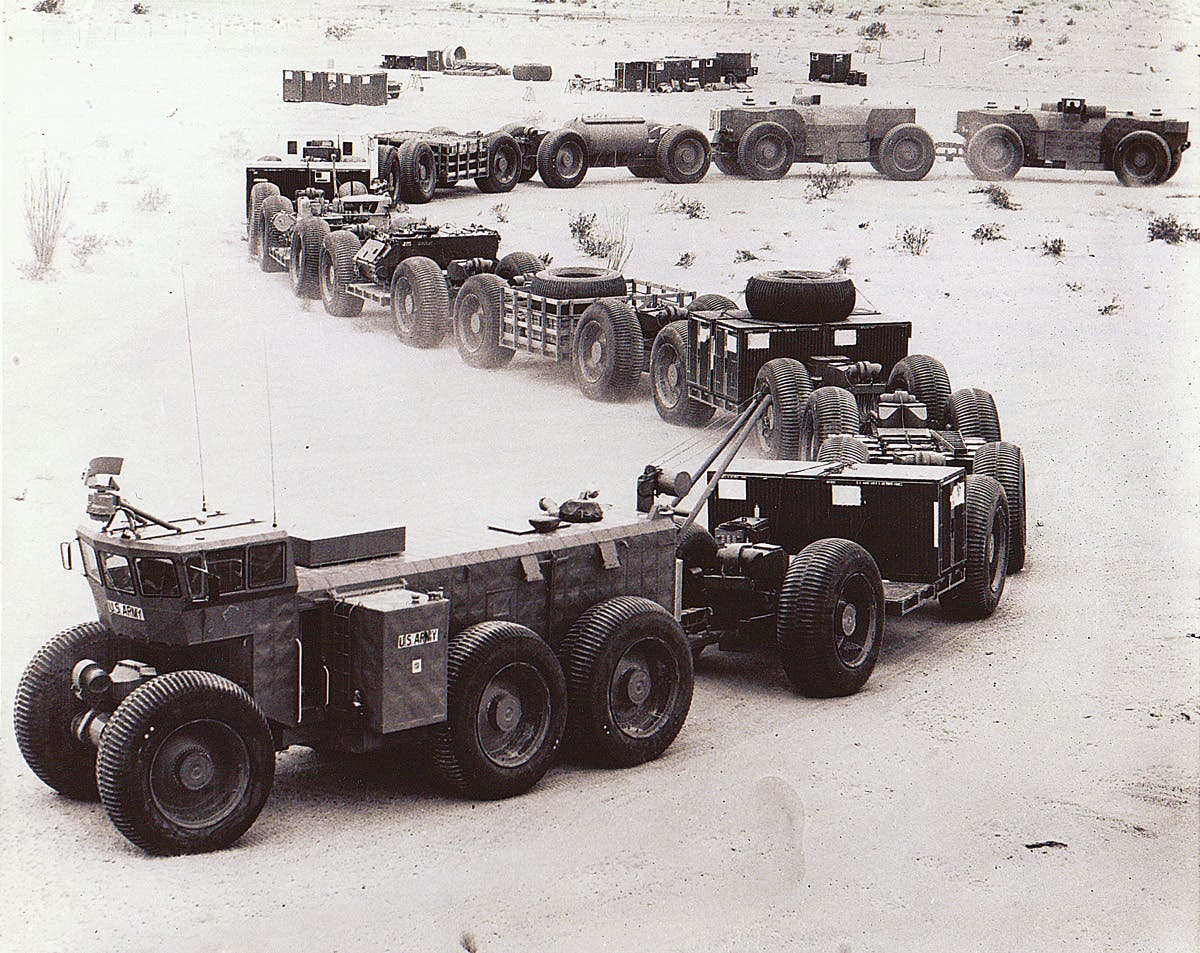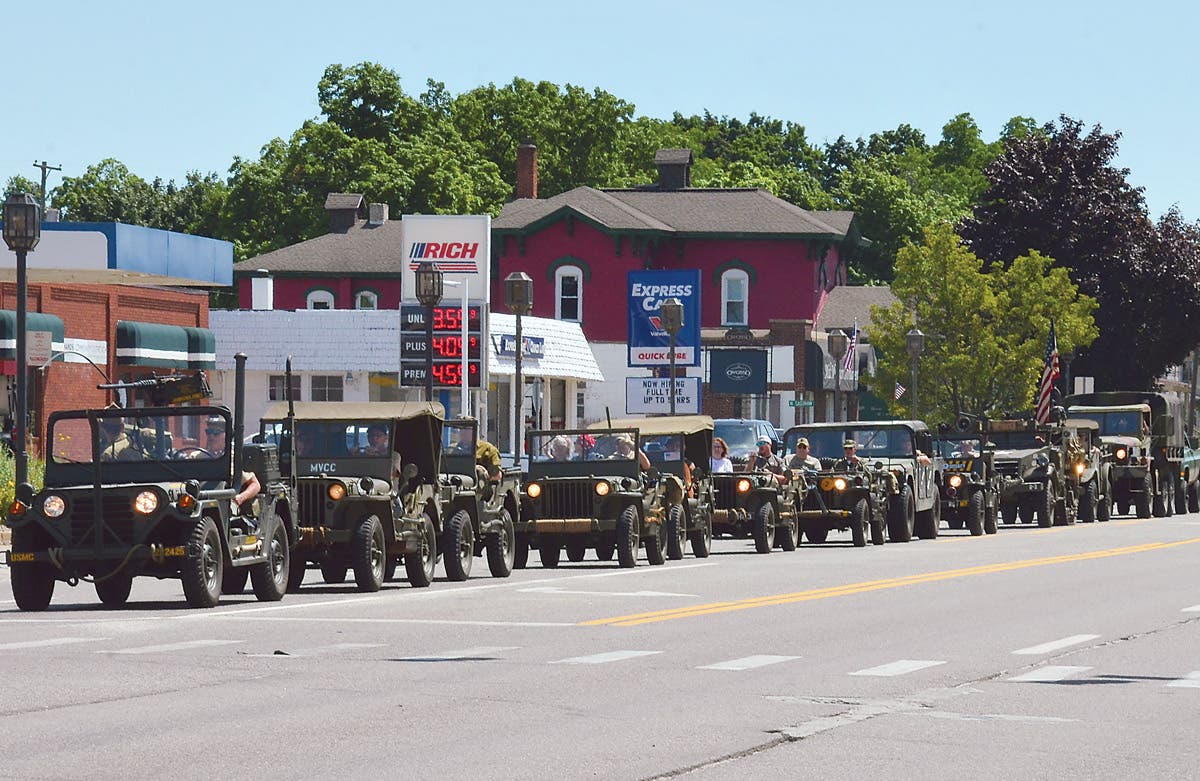G.I. Jeep Tales: Jeep Recon Platoon at Los Alamos, 1949
Jeeps, security, paranoia and nuclear testing shaped childhood memories in Los Alamos.
by David Brownell
I was a Navy brat. My first real exposure to Army troops and army combat vehicles was when I was about 4-1/2 years old. My father, a Navy Lieutenant, had been assigned to Los Alamos, where the Navy had recently taken over from the Army as the “housekeeping landlord.” Mom and I followed him a few months later, in early summer after we finally had been assigned housing on post. Although I was too young at the time to understand what it all meant, I was curious to see what living on a military post was like. While Dad had been assigned in San Diego, we had lived off-base in apartments.
In 1949, Los Alamos was still a rigorously enforced “closed post” — a highly secret research laboratory for the nation’s nuclear program located on the top of an 8,000-foot mesa. The military ran Los Alamos: labs, housing, schools, and all. The Army still had the task of external security for the post, while the Navy now ran the internal administration, post-engineering and services.
Universities, for the most part, ran the research labs, all with military liaisons and some of the researchers. Some of the labs, such as the weapons labs, were under military directors.
While we lived on Los Alamos, I would see uniforms from all services on post providing internal security guards and patrols and in the offices. Pairs of men in hats and uncomfortably hot-looking, three-piece suits (presumably FBI) were to be seen.
FIRST IMPRESSIONS
We took the train from San Diego. My dad met us at the Albuquerque station. We stopped in Albuquerque for Mom to register at the low-key Manhattan Project office where her photos and fingerprints were taken to receive her security ID card (I, as a kid, apparently was listed on her ID — I did not rate a photo). Then, we drove to the Los Alamos reservation and up the steep zig-zag road to the top of the mesa.
The road up the mesa had been freshly improved. Having lived in San Diego, I was familiar with the look and smell of freshly-bulldozed dirt roads. Although not a true switchback road, there was a waist-high berm and a substantial turnoff each time the major roadway reversed direction across the face of the mesa. And, this road was steep, much steeper than the civilian streets that we had driven in the hills near San Diego.
At the first turn back of the zig-zag road, we began to climb the lower slope of the mesa. I was fascinated to see a pair of Army jeeps and their crews. They stood behind the berm at the turn off area. One jeep mounted a machine gun, and the other had a back pack radio sitting on the back seat. The five or so soldiers took a good look at us using binoculars. Apparently they were combat troops, as there were no MP markings nor MP brassards.
After several minutes of climbing the road, we passed another pair of jeeps; again posted behind a turn off area’s berm. More climbing up the zig-zag road, and we then passed a third pair of jeeps. This time, an officer (gold bars on the collar of his fatigues) studied us through binoculars, while his radio operator spoke into the larger radio physically mounted in the jeep’s rear. A gun jeep mounting a large machine gun backed up the platoon leader.
Finally near the top of the mesa, yet another pair of jeeps with rifle-caliber machine guns were posted a couple turns of the road below the main gate.
Two Army MPs in starched fatigues with white helmets and MP brassards manned the gate, with other MPs inside the gatehouse. I’m not sure now which model of jeep was in use. At my age then, I would not have noticed the differences. In 1949, the jeeps were probably WWII vintage. The early M38 models were not in common service yet.
Apparently, the jeep teams guarding on the approach road were part of a recon platoon. My dad later explained that the Army rotated in either the jeep sections of Armored Cavalry troops or of infantry jeep reconnaissance companies. One team sat on the approach road, while the other platoons of the unit guarded the “back door” at the West Canyon and patrolled the trails on the fenced Los Alamos National Lab reservation.
LOOKING BACK
Today, it is hard to realize just how new, science-fictional and puzzling the topic of high energy physics and the nuclear program was in 1949. Also, it is hard to comprehend just how compartmented, secretive, and frankly, paranoid the government was about our little community at Los Alamos.
They had a right to be paranoid. This was all brand-new except to a small number of scientists and engineers. Other than those fully briefed in on the Manhattan Program, the average, well-read person of today knows much more about atomics than anyone in 1949.
I remember my mother and I attended a public ceremony after they opened the just-completed Linear Accelerator (also called an “Atom Smasher”). We were told it was the first one in the country. I’ve read that it was a mere 33-foot (10 meters) track. As we stood in the crowd, a well-dresed man asked the equally well-dressed man next to him the question that I had on the tip of my own tongue:
“What’s an accelerator?”
“I don’t know. I guess that it accelerates things?”
*As an Amazon Associate, Military Trader / Military Vehicles earns from qualifying purchases.
From the staff of North America's no. 1 historic military vehicle source -- Military Vehicles Magazine








